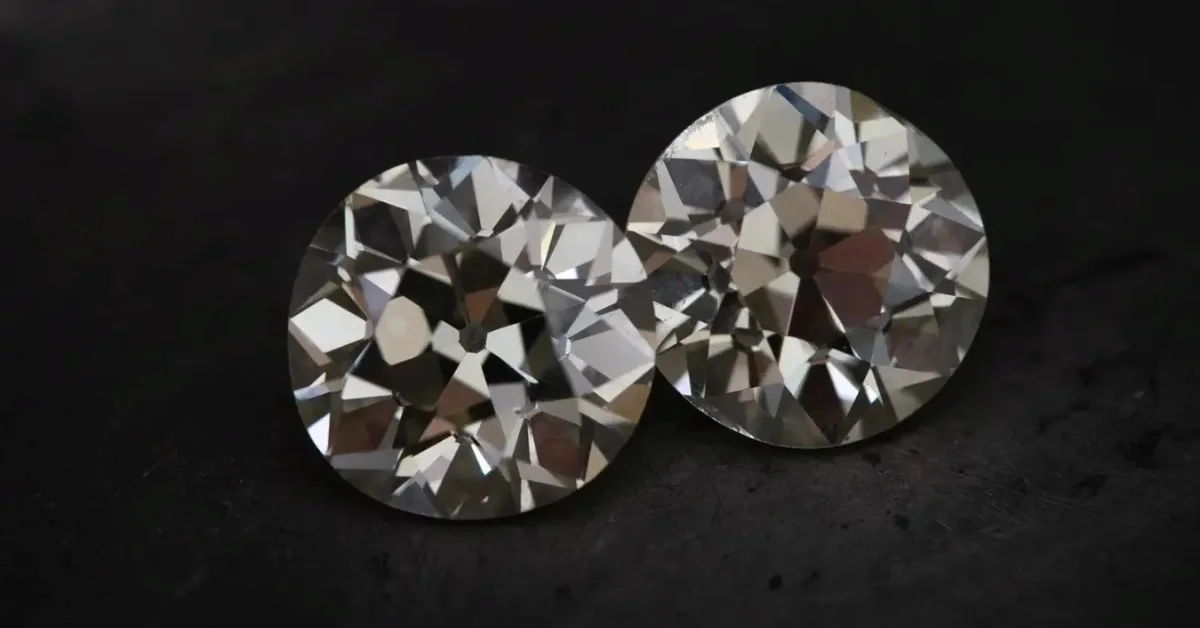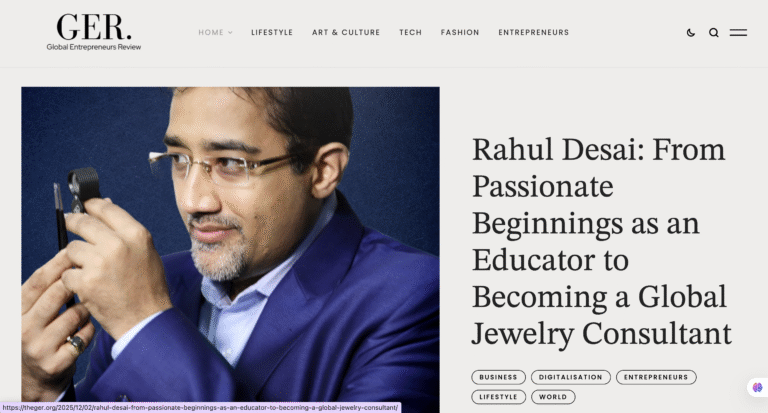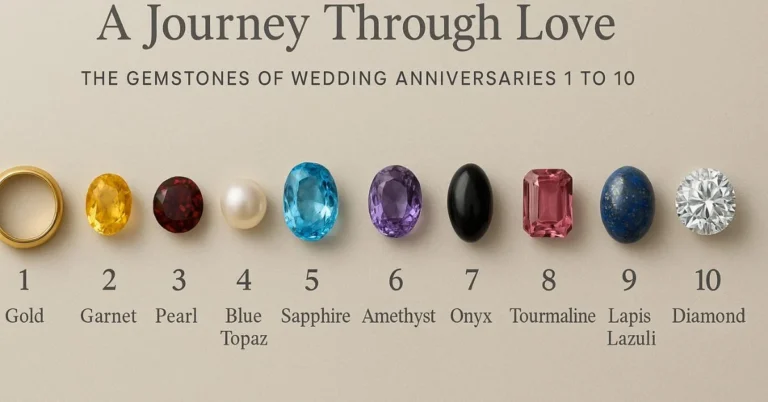When you think of a diamond, the image that likely comes to mind is that of a perfectly round, dazzling gem full of fire and brilliance — the Round Brilliant-Cut Diamond. It is the most iconic and most sought-after diamond shape in the world, making up over 70% of global diamond sales. Its 58 facets are meticulously arranged to optimize brilliance and light return, creating a sparkle that has captivated hearts for generations.
But this modern marvel is the result of centuries of craftsmanship, mathematical insight, and technological advancement. In this blog, we’ll take you on a journey through the evolution, structure, making, and market dominance of the 58-facet Round Brilliant Cut — a true masterpiece of gemological artistry.
A Journey Through Time: The Evolution of the Round Brilliant Cut
The path to perfection wasn’t a straight one. The modern Round Brilliant Cut evolved through centuries of experimentation and refinement. Let’s trace this fascinating journey:
🔹 Old European Cut (1700s–Early 1900s)

- The Old European Cut was the standard during the Victorian, Edwardian, and Art Deco eras.
- It was designed and cut entirely by hand, often prioritizing carat weight over light performance.
- Key features included:
- High crown
- Deep pavilion
- Small table
- Large open culet
- 58 facets, but with poor symmetry
Although beautiful, these diamonds didn’t sparkle as much as modern cuts because they lacked precision in angles and proportions
Circular Brilliant Cut (Early to Mid-1900s)


- A transitional phase that bridged the gap between the Old European and the modern brilliant.
- Improvements in cutting technology allowed for better symmetry and proportion control.
- Features of this cut included:
- Larger table
- Shallower pavilion
- Smaller culet
- More light reflection
This marked the beginning of a performance-driven approach to diamond cutting.
Modern Round Brilliant Cut (Since 1919)


- In 1919, Marcel Tolkowsky, a Belgian mathematician and diamond cutter, published his ground-breaking thesis titled “Diamond Design.”
- Using mathematical calculations, he established the ideal proportions for maximum light performance.

- This included:
- Table size: ~53%
- Crown angle: ~34.5°
- Pavilion angle: ~40.75°
- Depth: ~59-62.5%
These proportions are still referenced today as the benchmark for ideal cut diamonds.
Anatomy of the 58-Facet Round Brilliant Cut
The modern Round Brilliant Cut diamond consists of 58 carefully aligned facets, which play a vital role in maximizing brilliance, fire, and scintillation.

Facet Breakdown:
- Crown (Top Portion):
- 1 Table facet
- 8 Star facets
- 8 Kite (main) facets
- 16 Upper girdle facets
- Girdle (Midsection):
- A thin band separating the crown and pavilion; may be faceted or polished
- Pavilion (Bottom Portion):
- 8 Pavilion mains
- 16 Lower girdle facets
- Culet:
- Tiny or sometimes absent facet at the very bottom
This precise arrangement creates a prism-like effect, where light enters through the crown and reflects multiple times within the diamond before exiting — resulting in unmatched brilliance.
The Making of a Round Brilliant Cut Diamond
Creating a round brilliant diamond is a meticulous, multi-step process involving both artistry and science. Here’s a behind-the-scenes look at how rough diamonds are transformed into dazzling masterpieces:

- Planning
- Advanced 3D mapping software (like Sarine or DiaVision) is used to scan the rough diamond.
- The goal is to maximize yield while optimizing the shape and clarity.
- Inclusions, crystal orientation, and weight are factored into the cutting plan.
- Cleaving or Sawing
- If the rough diamond is large or irregular, it is cleaved (split) or sawn into manageable sections.
- Laser sawing is now the preferred method due to its accuracy.
- Bruting
- The rough stone is grounded into a circular shape using a process called bruting (or girdling).
- Two diamonds are set on rotating axles and used to grind against each other to create the round outline.
- Faceting the Pavilion
- The first 24 facets are cut on the pavilion (bottom) of the diamond.
- Precision is key here to establish the correct pavilion angle for optimal light return.
- Faceting the Crown
- The remaining 33 facets are cut on the crown (top), including the table.
- Angles and symmetry are meticulously monitored to maintain Tolkowsky’s ideal proportions.
- Polishing
- All facets are polished to a mirror finish using diamond dust and cast iron scaifes (discs).
- Polish quality is graded (Excellent, Very Good, etc.) during certification.
- Final Inspection & Grading
- The diamond undergoes strict quality control and is often sent to certification labs like GIA, IGI, or HRD.
- It is assessed for cut, color, clarity, carat, and overall finish.
Why It’s the Highest Selling Cut in the World
The dominance of the round brilliant cut isn’t just due to tradition — it’s backed by solid reasons:

- Maximum Brilliance
- The symmetrical facet pattern reflects more white light (brilliance) and colored light (fire) than any other shape.
- Timeless Aesthetic
- Its classic, circular silhouette never goes out of style, making it a favorite for engagement rings, pendants, and stud earrings.
- Versatile for Any Setting
- Works well with solitaires, halos, vintage settings, or contemporary styles.
- Complements every metal type — gold, platinum, rose gold, etc.
- Standardized Cut Grading
- Only the Round Brilliant Cut receives an official cut grade from major labs like GIA, making it easier to evaluate and trust.
- Higher Resale Value
- Due to strong consumer demand, round brilliants generally retain or appreciate in value better than fancy shapes.
- Perfect for Symbolism
- Its round shape symbolizes eternity, wholeness, and endless love, making it the perfect choice for lifelong commitments.
Round Brilliant Diamonds in the Market
- Over 70-75% of all diamonds sold worldwide are round brilliant cuts.
- They are the most widely available in both natural and lab-grown diamonds.
- Round brilliants dominate the bridal market, contributing significantly to the diamond industry’s global revenue.
Final Thoughts
The 58-facet Round Brilliant Cut Diamond is more than a sparkling stone — it’s a brilliant fusion of science, geometry, craftsmanship, and emotion. Its evolution from the Old European Cut to the precision-perfect modern brilliant cut reflects mankind’s eternal desire to capture light in its purest form.
Whether you’re investing in a diamond or simply admiring one, knowing the rich history and technical brilliance behind this cut will deepen your appreciation of its unmatched beauty.
If you’re looking to learn more about diamond cutting, gemology, or jewellery design, explore top-tier educational platforms like IIG — a global leader in gems and jewellery education offering online, offline, and hybrid programs for aspiring professionals.






